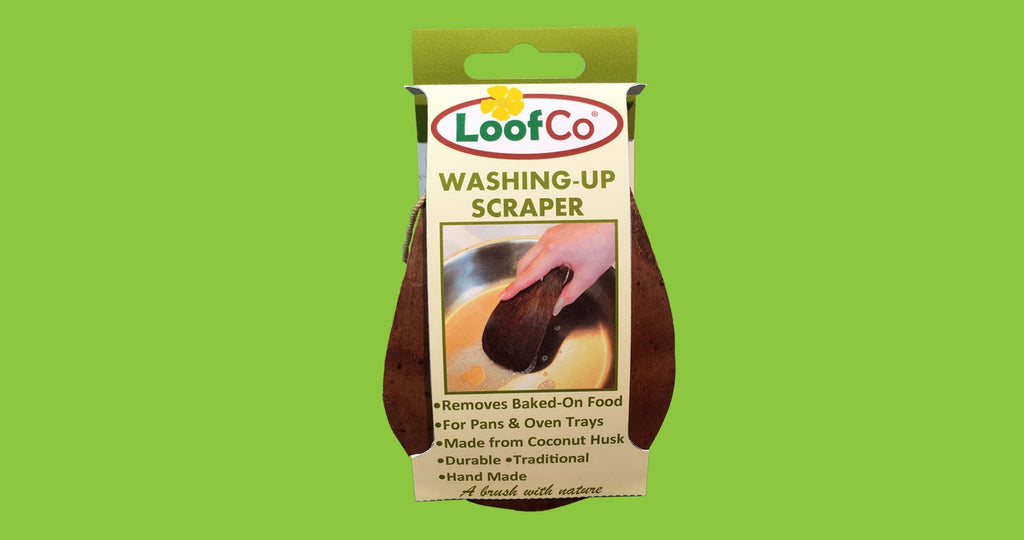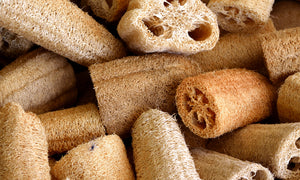Notes From the Sink: Tackling Baked-on Food

Washing-up bigger items that will not fit in the dishwasher, or pans that need some extra cleaning attention is often a job that falls to me. Removing baked-on food and sauce from roasting trays or lasagne dishes is a task that I enjoy now that I have a LoofCo Washing-Up Scraper in my armoury. I follow a fail-safe routine using a LoofCo Washing-Up Scraper, made from coconut husk and Dishmate Washing-Up Liquid (personal favourite is Pear fragrance).
The Washing-Up Scraper started out as a tool for removing the flesh from coconuts in the Philippines. This progressed as a useful implement for cleaning jobs. At LoofCo we have taken this traditional tool and highlighted its versatility as a washing-up accessory for removing baked-on food. As the inside of the coconut husk is made of coir fibres it has a soft brush-like texture on the inside and a blade-like edge on the outside. This is a 2-in-one tool that works on stainless steel, ceramic dishes as well as non-stick pans (though for these take a more gentle approach until the scraper softens in water).
My routine for removing backed-on food:
1: Soak the offending dish in warm to hot water and Dishmate Washing-Up Liquid until baked-on food has softened
2: When the food has sufficiently softened, use the wide blade-like edge of the scraper to scrape away food from the pan or tray. Turn the Scraper around you can use the narrow end for getting into awkward corners.
3: Use the underneath bristly edge of the Scraper to scrub the pan clean.
4: Rinse with clear water and spot check as needed.
5: Rinse Scraper and hang up to drip dry from string loop
Over time the edge of the Washing-Up Scraper may start to fray. However it can be neatened up with a pair of scissors for many months more use. It really is an ingenious tool and best of all it is plastic free! Dishmate works well without harsh chemicals.

- Lois Clark






